
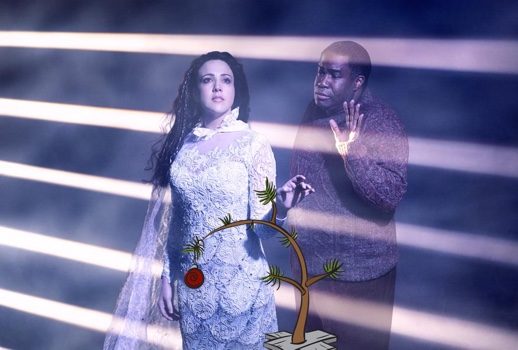
We draw nearer to the end of a year that has been tumultuous and often upsetting, within and beyond the opera world. It would be fair to say that many of us did not get what we expected or wanted in 2016, and we have said goodbye to many admired figures in the arts. Some had lived long lives full of accomplishments; others were taken too soon.
The uneasy situation surrounding the Met’s music-director position reached a resolution in the spring, and the future holds promise. There was much to cheer, and to be cheered by, on the stage: triumphs of favorites such as Nina Stemme, Elina Garanca, Anna Netrebko and Karita Mattila in new Met roles; acclaimed productions of Les pêcheurs de perles, Elektra and Tristan und Isolde; the long-awaited return of Guillaume Tell.
Even in disappointing new productions and ordinary revivals, we welcomed newcomers. One day when I am long gone, perhaps someone will pick through the archives and marvel that 2016 was the year Metgoers made the acquaintance of Juan Jesús Rodríguez, Andrew Bidlack, Virginie Verrez, Karel Mark Chichon, Artur Rucinski, Eleonora Buratto, René Barbera, Susanna Mälkki. Every one of them, whether in a large assignment or a small one, did something worth noticing, something that made me want to hear more.
Our holiday survey will not, alas, feature Rimsky-Korsakov’s Christmas Eve, critic Noel Straus, baritone Natale de Carolis, or either Ian or Leah Partridge in a pear tree. But there will be a swan a-swimming. Here is a look back at just some of what you could have seen, and perhaps did see, on December 24th through the years at the Met.

1903: Parsifal received its first staging anywhere other than the Bayreuth Festspielhaus, to which Wagner had decreed it be exclusive. Risking the enmity of the composer’s widow, who always had plenty to spare, were Milka Ternina, Alois Burgstaller, Anton Van Rooy, Otto Goritz, Robert Blass, Marcel Journet and conductor Alfred Hertz. The Times‘s Richard Aldrich was enthusiastic to the point of hyperbole: “The artistic value of the Parsifal production was of the very highest. It was in many respects equal to anything done at Bayreuth and, in some, much superior. It was without doubt the most perfect production ever made on the American lyric stage. Those who wish to quarrel with the performance on aesthetic, moral or religious grounds have still as much upon which to stand as before. Artistically it was nothing less than triumphant.” Parsifal‘s nearly 300 Met performances have been spread over every decade since. The work failed only to catch on as a yuletide perennial.
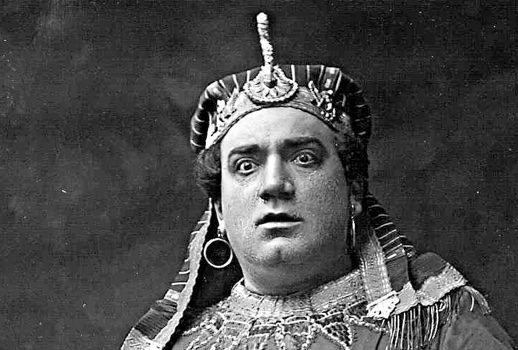
1920: Now suffering from a much more serious illness, Caruso appeared as scheduled for what would be his final public performance, Eléazar to the Rachel of Florence Easton in La Juive. During this difficult month, the tenor also had sung Met performances of Samson, Canio, Don Alvaro and a single act of Nemorino. When he died the following summer, 48 years old, with a Met tally of 863 appearances, 36 roles, and 17 opening nights, the world mourned both a global celebrity and a great artist. Caruso once had been quoted as saying, “I would like to die at the height of my fame, some night when I had just sung Pagliacci, perhaps. But I suppose that cannot be. You may be sure that I will not hang around opera houses with the vestiges of a voice, like so many unfortunate musicians.” On another occasion, in 1916, he had told the New York Friars Club, “I promise you that when I go to heaven I shall sing forever.”

1928: A mischievous unsigned Telegraph review gives a sense of the high spirits and unfocused air of a Lohengrin on the last Christmas Eve before the Great Depression. “The audience at the Metropolitan last night must have been very late hanging their own stockings for they stayed to the end of the late last scene and acted as though there was nothing about this evening different to any other. Various attendants of the staff, however, […] left the building, carrying various kinds of bundles. Backstage, the singers and musicians had a celebration […] The chorus was absolutely impossible from the point of view of good performing, but in the right mood for the evening. A little bird said that gifts had been passed around by quite a number of the stars and principals and that they had been opened before or during the performance.” Translation: Prohibition was being flouted. The cast included Easton, Margarete Matzenauer, Rudolf Laubenthal and Gustav Schützendorf, but only conductor Artur Bodanzky was said to have been “completely the disciple of true art.”

1955: The 80-year-old conductor Pierre Monteux‘s Indian summer at the Met included a fondly recalled Les contes d’Hoffmann, heard in a famous radio broadcast earlier in the season. On Christmas Eve, Richard Tucker remained the titular poet, and Martial Singher continued to give lessons in style and dash as the villains. The love interests, two of them new to the production, were Laurel Hurley, Jarmila Novotna and Lucine Amara. Future headliner James McCracken, 29, sang the small role of Nathanael as if determined to prove his readiness for Tannhäuser or Otello that season.

1960: The Tribune‘s Martin Bernheimer carefully appraised a house favorite in Bohème: “[Renata] Tebaldi was in relatively good voice, and there is no question that she pleased her many admirers. The tender Puccini heroine suits her temperament, and the quieter moments such as the Act Three farewell were exquisite. Although her histrionic technique is of the stand-and-smile variety, and although she is not exactly frail either in voice or in appearance, Miss Tebaldi was a touching and dignified Mimi. The soprano has been having some trouble with top tones lately. Most of Mimi lies comfortably for her, but the role does pose a problem or two. The exposed High C at the end of Act One, for instance, was avoided by a downward transposition of a half-tone, and–even at that–Miss Tebaldi attacked it from below.” Hurley, Eugenio Fernandi and Clifford Harvuot were the other young lovers in Thomas Schippers‘s cast.

1977: The annals are littered with the names of special artists who for whatever reasons, their own decisions or others’, had negligible Met careers. Christmas Eve 1977 began with a Bohème starring ladies who settled in and made the house a home: Renata Scotto and Leona Mitchell racked up more than 500 performances between them. But the evening show was one of just four opportunities to hear Maria Chiara in her only Met role, Violetta, opposite Alexander and Louis Quilico. A week later, the last of these Traviatas received a New Year’s Eve broadcast. Chiara’s only subsequent Met connection would be through the illusion of cinema: in Woody Allen‘s 1986 film Hannah and Her Sisters, she is seen and heard as the Puccini Manon in the opera date of the Sam Waterston and Dianne Wiest characters. The footage was from Teatro Regio Torino.

1993: A Franco Zeffirelli Bohème conducted by Carlo Rizzi, starring Veronica Villarroel, Gwynne Geyer, Fernando de la Mora and Dwayne Croft, sounds like business as usual for this era, but there was an unexpected development. A note on the performance’s page in the archive reads: “As the houselights were dimming, a gentleman from the audience climbed onto the stage apron and proposed marriage to his seated companion; she accepted. The man wished the audience a merry Christmas, and climbed down. No delay occurred.” We wish them a happy 23rd anniversary of the engagement, and hope things worked out well enough for the wish to be tactful.

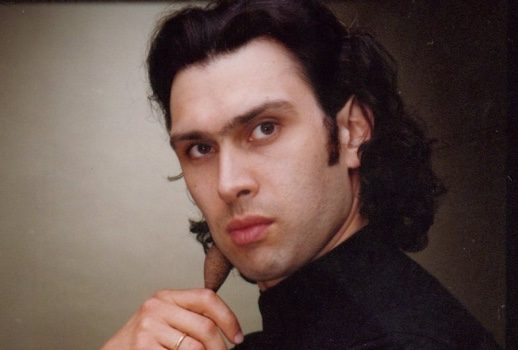
















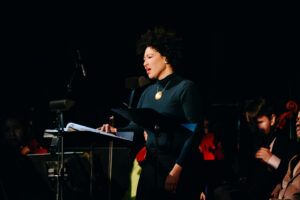
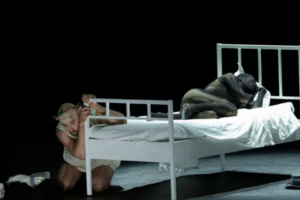
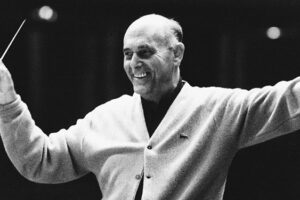






Comments